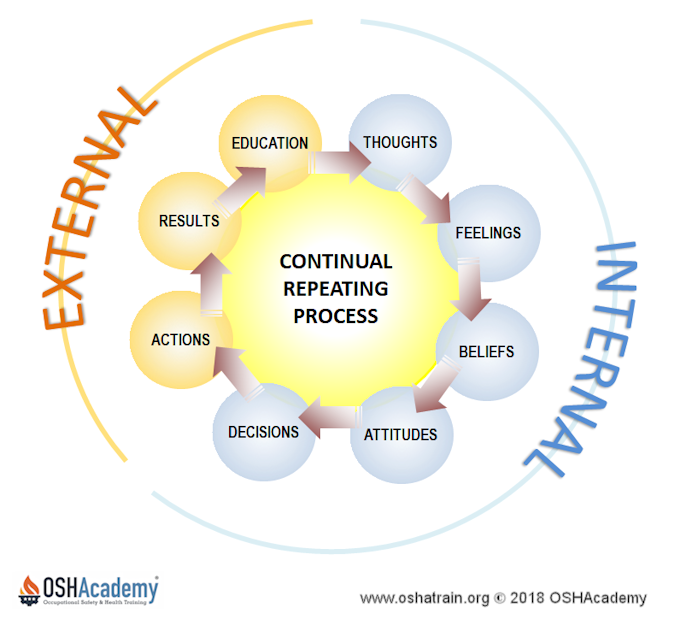Learning is a Continual Process
Let's now explore the KSA (Knowledge, Skills, Abilities) process as an ongoing learning cycle. Please refer to the illustration on the right.
It's crucial to recognize that this process does not progress linearly. Rather, it is typical for the steps within the KSA process to repeat in a continuous cycle.
Everything we are aware of educates us. The things we see and hear in our surroundings impact us in various ways. Here's how it works:
- Internally: Education shapes our thoughts.
- Emotional Response: Our body reacts to thoughts with emotions.
- Influence on Beliefs and Attitudes: Over time, our thoughts and feelings most directly shape our beliefs and attitudes.
- Decision Making: Our beliefs and attitudes guide the decisions we make.
- Influence on External Behaviors: Our thoughts, feelings, beliefs, and decisions affect how we behave.
- Consequences: Our behaviors lead to outcomes that teach us new lessons, and the cycle continues.
For instance, Bob witnesses Gloria get hit on the head with a wrench someone dropped while working overhead. Now let's look at the process:
- Thoughts: Bob thinks, "Gloria was just hit and might be hurt."
- Feelings: Immediately, Bob's very concerned about Gloria's accident, but is relieved when he learns she was wearing a hard hat.
- Beliefs: He is sure that, because Gloria was wearing a hard hat, she didn't get hurt.
- Attitudes: Gloria's near miss changes Bob's attitude about the importance of wearing hard hats.
- Decisions: He decides to start wearing a hard hat at work.
- Actions: So, he walks over to the supply room, gets a hard hat and wears it every day at work.
- Results: Bob doesn't get hurt, and the other workers he warns do not get hurt either.
- Education: The results (consequences): Bob's experience educates him about the importance of wearing hard hats. His changed behaviors and actions (leadership) help to improve the corporate safety culture.
Knowledge Check Choose the best answer for the question.
1-3. What most directly influences our internal beliefs and attitudes over time?
You forgot to answer the question!

